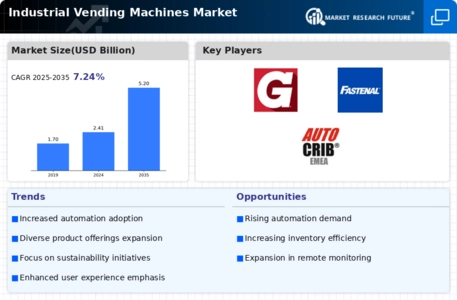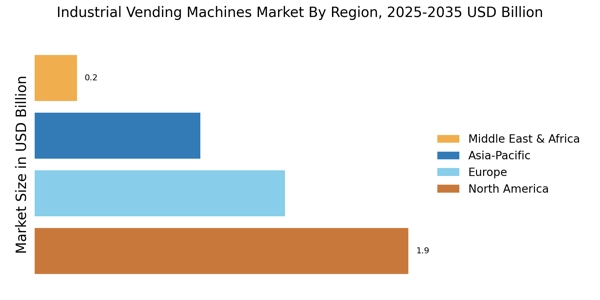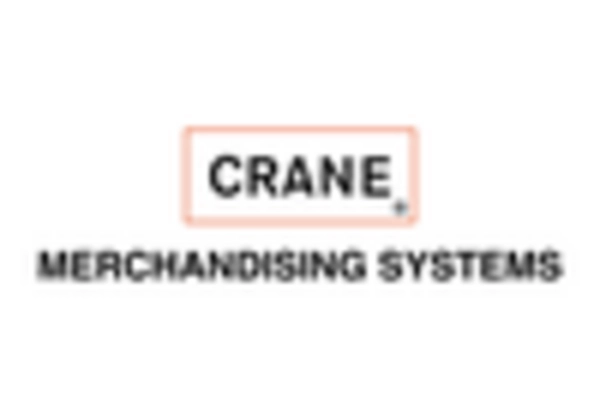Increased Demand for Automation
The Industrial Vending Machines Market is experiencing a notable surge in demand for automation solutions across various sectors. Companies are increasingly adopting vending machines to streamline operations, reduce labor costs, and enhance efficiency. This trend is particularly evident in manufacturing and logistics, where the need for quick access to tools and supplies is paramount. According to recent data, the market for industrial vending machines is projected to grow at a compound annual growth rate of approximately 10% over the next five years. This growth is driven by the desire for operational efficiency and the reduction of downtime, as businesses seek to optimize their supply chain management through automated solutions.
Rising Focus on Inventory Management
Effective inventory management is becoming a critical factor in the Industrial Vending Machines Market. Organizations are increasingly recognizing the importance of real-time tracking and management of supplies to minimize waste and ensure availability. Vending machines equipped with advanced inventory management systems allow companies to monitor stock levels and usage patterns, leading to more informed purchasing decisions. This trend is supported by data indicating that businesses utilizing industrial vending solutions can reduce inventory costs by up to 30%. As companies strive for operational excellence, the integration of sophisticated inventory management features into vending machines is likely to become a standard expectation.
Sustainability and Eco-Friendly Practices
Sustainability is becoming a key driver in the Industrial Vending Machines Market as companies seek to align with eco-friendly practices. There is a growing emphasis on reducing waste and promoting the use of sustainable materials in vending machine production. Many manufacturers are now offering machines that utilize energy-efficient technologies and recyclable components. This shift is not only beneficial for the environment but also appeals to consumers who are increasingly conscious of sustainability issues. Data indicates that businesses adopting eco-friendly vending solutions can enhance their brand image and potentially increase customer loyalty, making sustainability a crucial factor in the future growth of the market.
Shift Towards Employee Safety and Wellbeing
The Industrial Vending Machines Market is witnessing a shift towards enhancing employee safety and wellbeing. Organizations are increasingly investing in vending solutions that provide personal protective equipment (PPE) and safety gear directly on-site. This approach not only ensures that employees have immediate access to necessary safety items but also promotes a culture of safety within the workplace. Data suggests that companies that prioritize employee safety through such initiatives can experience a reduction in workplace accidents by up to 25%. As safety regulations become more stringent, the demand for vending machines that cater to these needs is expected to rise significantly.
Technological Advancements in Vending Solutions
Technological advancements are playing a pivotal role in shaping the Industrial Vending Machines Market. Innovations such as IoT connectivity, mobile payment options, and advanced user interfaces are enhancing the functionality and user experience of vending machines. These technologies enable real-time data collection and analytics, allowing businesses to optimize their vending operations. The integration of smart technology is projected to increase the efficiency of vending machines, with estimates suggesting that smart vending solutions could account for over 40% of the market share by 2030. As technology continues to evolve, the demand for sophisticated vending solutions is likely to grow.


















Leave a Comment